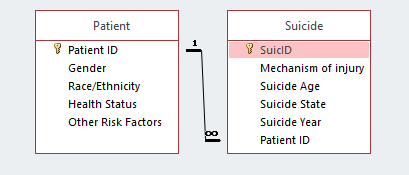Critical Aspects of Database Design, Development, and Application
Given the fact that various types of databases are being used in healthcare, it is relatively difficult to make universal conclusions. Also, the databases that are meant, for example, for patient data and human resource one are likely to be different. Similarly, the database scope can define the specific needs and issues related to it (national data warehouse and a local electronic medical records database are likely to be very different). Still, the typical concerns of data design, development, and application include logical organization (which includes the choice of the database model), cost-efficiency, equipment adequacy, and maintenance activities (Collen, 2012; Wiederhold, 2012).
In particular, it is important that the people who will be involved in the maintenance and modification of the databases are educated on how to carry out their duties. For example, the possible negative consequences of copy-pasting patient data are well-known (American Health Information Management Association, 2014). Also, the confidentiality of the data and backups development are a recurring concern for database development and use (Abdelhak & Hanken, 2014, p. 269).
Database Models
There are several types of database models that are used in healthcare; the most popular one is called “relational,” and it presupposes the existence of multiple tables with relationships between them (Abdelhak & Hanken, 2014, p. 268). It allows storing data once and retrieving it when necessary from numerous lookup tables (Collen, 2012). Also, it provides the opportunity of removing the patient name from the records and substituting it with the identifier, which is a confidentiality opportunity.
The hierarchical model is built as a “treelike structure that consists of parent (or root) and child segments,” which defines its typical application: one-to-many relationships (Abdelhak & Hanken, 2014, p. 269). This kind of database is less popular, and its use requires some understanding of the logic of its organization, which makes it useful for advanced users with predetermined queries.
The proposed database from the previous task had three tables, which is why it needed revision for this assignment. Also, when designing the model, I had decided to leave out the specific attributes of entities, and for this task, I had to choose several attributes. I did it using existing databases as examples. In particular, I paid attention to the interactive map on fatal injury data that was created by Centers for Disease Control and Prevention’s (2013) as one of the WISQARS™ (Web-based Injury Statistics Query and Reporting System) tools.
I also added Health Status to track down possible causes of suicide. Also, since the Office of Disease Prevention and Health Promotion (2016) tracks attempts of suicide in adolescents rather than the deaths related to suicide, this health status can be of importance. Other Risk Factors was added as a suggestion; possibly, a national database could include more detailed attributes. As for the suicide, judging by the databases that I have reviewed, it is important to state the age of the suicide (or suicide attempt), state (naturally important for national statistics) year (data is probably a possibility, but national databases are especially interested in the year), and the mechanism of the injury.
Naturally, one person can have made several attempts, which is reflected in the tables’ relationship: one-to-many (Alexander & Kusleika, 2016, pp. 109-110). However, I still suggest that other attributes could be introduced; I would not mind receiving some comments from my peers. The records are, naturally, made up; each table has five of them.
To normalize the database, I used the book by Alexander and Kusleika (2016). There are no cells that contain more than one value, no repeating groups of data (1NF), the data that refers directly to the patient is in the Patient table, but that related to suicide is in the Suicide one (2NF), and all the data cannot be derived from another table (3NF), at least, not at this stage of database development.
I attach the database; also, Appendix A contains the screenshots for your convenience.
References
Abdelhak, M. & Hanken, M. (2014). Health information. New York, NY: Elsevier Health Sciences.
Alexander, M. & Kusleika, D. (2016). Access 2016 Bible. New York, NY: John Wiley & Sons.
American Health Information Management Association. (2014). Appropriate Use of the Copy and Paste Functionality in Electronic Health Records.
Centers for Disease Control and Prevention. (2013). WISQARS™: Fatal Injury Mapping.
Collen, M. (2012). Computer medical databases. London: Springer-Verlag London Ltd.
Office of Disease Prevention and Health Promotion. (2016). Mental Health And Mental Disorders.
Wiederhold, G. (2012). Databases for Health Care. Berlin, Heidelberg: Springer Berlin Heidelberg.
Appendix A
Database Screenshots


